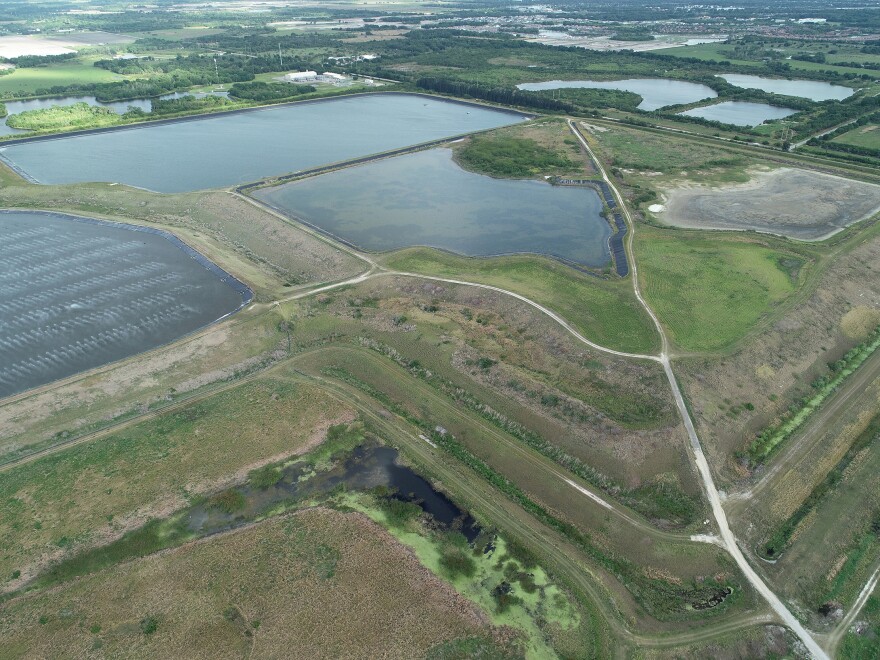The amount of polluted water being discharged from the Piney Point reservoir into Tampa Bay has been reduced by 90%, the Florida Department of Environmental Protection said on Thursday.
That means the releases from the former phosphate plant in Manatee County have are down to 5 million gallons a day. The DEP will also start treating the water from the reservoir before releasing it to reduce nutrients flowing into Tampa Bay, a release from the state said.
“This will significantly reduce nutrient loading to Port Manatee and help minimize water quality impacts,” the release said.
So far, about 202 million gallons of water has been discharged into Tampa Bay at Port Manatee, officials said. At one point, it had been flowing into the bay at a rate of up to 50 million gallons a day.
Before the reservoir started leaking last week, it contained about 480 million gallons of water. About 232 million gallons remain.
Submersible cameras and divers on Wednesday confirmed a separation in the seam that lines the walls of the reservoir. That is what caused the reservoir to start spewing up to 70,000 gallons per day. For a period of days, officials feared the leak would cause a massive breach in the reservoir wall, which would have sent a wall of polluted water into the surrounding area.
Crews are now working to repair the liner to contain the flow.
Scientists from the state, environmental organizations and the University of South Florida are separately gathering data on water samples taken from the area around the discharge in Tampa Bay.
So far, there haven’t been any fish kills but data on nutrient levels in parts of the bay are still pending.
Copyright 2021 WUSF Public Media - WUSF 89.7. To see more, visit WUSF Public Media - WUSF 89.7. 9(MDAyMTYyMTU5MDEyOTc4NzE4ODNmYWEwYQ004))








